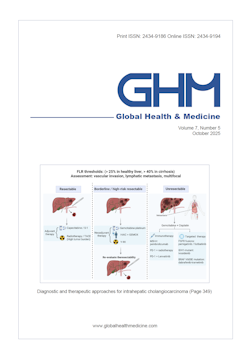Global Health & Medicine 2023;5(6):319-327.
Amebiasis as a sexually transmitted infection: A re-emerging health problem in developed countries
Kawashima A, Yanagawa Y, Shimogawara R, Yagita K, Gatanaga H, Watanabe K
Amebiasis, which is caused by Entamoeba histolytica (E. histolytica), is the second leading cause of parasite-related death worldwide. It manifests from asymptomatic carriers to severe clinical conditions, like colitis and liver abscesses. Amebiasis is commonly seen in developing countries, where water and food are easily contaminated by feces because of the poor sanitation. However, a recently challenge in many developed countries is the increase in domestic cases of invasive amebiasis as a sexually transmitted infection (STI amebiasis). In contrast to food-/ waterborne transmission of E. histolytica in developing countries, transmission of STI amebiasis occurs directly through human-to-human sexual contact (e.g., men who have sex with men and people who engage in oral-anal sex); in this setting, asymptomatic infected individuals are the main reservoir of E. histolytica. The Development of screening methods for the early diagnosis of asymptomatic E. histolytica infection is the key to epidemiologic control. Moreover, delay in diagnosis of severe cases (e.g., fulminant amebiasis) leads to death even in developed countries. It is also important to increase clinical awareness of domestically transmitted STI amebiasis in the clinical settings. This review considers the changing epidemiology and clinical manifestations of STI amebiasis, and finally discusses the future strategies for the better practice.
DOI: 10.35772/ghm.2023.01064







